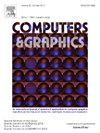Weakly supervised semantic segmentation for ancient architecture based on multiscale adaptive fusion and spectral clustering
IF 2.5
4区 计算机科学
Q2 COMPUTER SCIENCE, SOFTWARE ENGINEERING
引用次数: 0
Abstract
Existing methods of weakly supervised semantic segmentation for ancient architecture have several limitations including difficulty in capturing decorative details and achieving precise segmentation boundaries due to the many details and complex shapes of these structures. To mitigate the effect of the above issues in ancient architecture images, this paper proposes a method for weakly supervised semantic segmentation of ancient architecture based on multiscale adaptive fusion and spectral clustering. Specifically, low-level features are able to capture localized details in an image, which helps to identify small objects. In contrast, high-level features can capture the overall shape of an object, making them more effective in recognizing large objects. We use a gating mechanism to adaptively fuse high-level and low-level features in order to retain objects of different sizes. Additionally, by employing spectral clustering, pixels in ancient architectural images can be divided into different regions based on their feature similarities. These regions serve as processing units, providing precise boundaries for class activation map (CAM) and improving segmentation accuracy. Experimental results on the Ancient Architecture, Baroque Architecture, MS COCO 2014 and PASCAL VOC 2012 datasets show that the method outperforms the existing weakly supervised methods, achieving 46.9%, 55.8%, 69.9% and 38.3% in Mean Intersection Over Union (MIOU), respectively. The code is available at https://github.com/hao530/MASC.git

求助全文
约1分钟内获得全文
求助全文
来源期刊

Computers & Graphics-Uk
工程技术-计算机:软件工程
CiteScore
5.30
自引率
12.00%
发文量
173
审稿时长
38 days
期刊介绍:
Computers & Graphics is dedicated to disseminate information on research and applications of computer graphics (CG) techniques. The journal encourages articles on:
1. Research and applications of interactive computer graphics. We are particularly interested in novel interaction techniques and applications of CG to problem domains.
2. State-of-the-art papers on late-breaking, cutting-edge research on CG.
3. Information on innovative uses of graphics principles and technologies.
4. Tutorial papers on both teaching CG principles and innovative uses of CG in education.
 求助内容:
求助内容: 应助结果提醒方式:
应助结果提醒方式:


